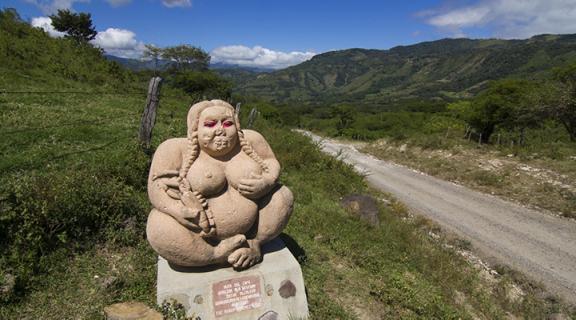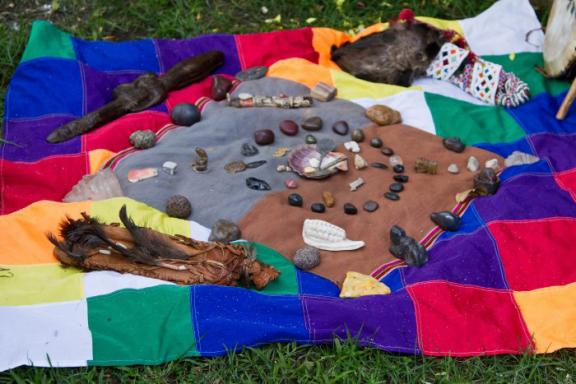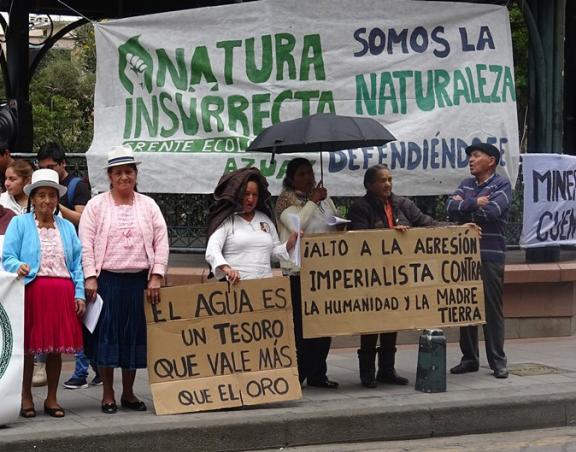Mother Earth Day in the Andes
August 1st in much of South America is a day for celebrating the power and wonder of Mother Earth. Except we don’t call it Mother Earth. Andean communities from Ecuador, Peru, Bolivia, Chile and Argentina refer to Mother Earth as Pachamama. Stories of the Goddess Pachamama are embedded in many local languages and cultures. As someone from Peru, my understanding of “Mother Earth” is one commonly shared by people across South America, specifically throughout the Andes.
We celebrate Pachamama to remind us of our collective responsibility to promote harmony with nature and to balance the economic, social and environmental needs of present and future generations. We celebrate Pachamama not only to pay tribute to nature, but also to educate people on wildlife protection and environmental care. We celebrate Pachamama to remind us that taking too much from nature leads to pain. People work so hard on developing a close relationship with nature and the land, their August ritual[1] to give back to Earth what it has given them is of great spiritual and cultural significance.
Pachamama ceremonies include arranging special offerings such as coca leaves, unwrought silver, traditional alcoholic beverages, food, flowers, candies and cigarettes. Such offerings give strength to the Goddess, so that she might go on generating life. But the significance of Pachamama has gone far beyond being a day of cultural celebration and expressing community identity. Recently, communities have gained increasing visibility for raising their voices to protect Mother Earth. Already some governments have introduced environmental laws to support Mother Earth’s sustainability. This is the case in Ecuador and Bolivia.
Bolivia’s Mother Earth law recognizes nature’s legal right to life and regeneration, to clean air and water, to biodiversity and restoration. In effect, this a legal paradigm shift. All existing and future laws must adapt to the Mother Earth law and accept the ecological limits set by nature. This is bound to impact on the country’s underlying economic and social codes and conduct. For example, the legal text says “any person, in his own right or on behalf of a collective, is authorized to take legal actions in defense of environmental rights”[2]
In Ecuador, the intention of the legal changes is similar. Articles 71 and 72 of the constitution in 2008 say: “Nature, or Pachamama, where life is reproduced and occurs, has the right to integral respect for its existence and for the maintenance and regeneration of its life cycles, structure, functions and evolutionary processes. All persons, communities, peoples and nations can call upon public authorities to enforce the rights of nature”. It also states “Nature has the right to be restored. This restoration shall be apart from the obligation of the State and natural persons or legal entities to compensate individuals and communities that depend on affected natural systems.”[3]
These legislative changes represent an indigenous heritage blending with modern juridical practice. In effect, they come close to giving human rights to the Goddess Pachamama. If politicians and their constituents can come together and implement such profound changes in environmental law, this must surely behoove well for a legislative attack on climate change? After all, other countries are following Ecuador and Bolivia’s example – often with a view to combatting climate change. New Zealand has granted legal personhood to its Te Urewara National Park, going even further than Ecuador and Bolivia in extending the park the same rights and powers as that of a citizen.[4] For conservationists and those worried about climate change, this is a landmark decision. It gives them a whole new — and potentially more powerful — method for protecting the environment from further degradation.[5]
However, while the changes in Ecuador and Bolivia have motivated other countries around the world to initiate at least a debate on recognition of the rights of nature, in reality the two countries face challenges in enforcing their new laws. As we all know, laying down the rules is one thing, getting people to obey them is another. This is what evaluators call the “last mile challenge”: when the road to implementing change finally hits the ‘human stretch’ where all the preceding good work comes undone because people refuse to change their behaviour. But maybe that is being too pessimistic. Let’s not forget it was the importance of Mother Earth to people in Ecuador and Bolivia that led to their new laws. If governments, business and people can come together to protect the goodness of Pachamama, surely they can come together to combat the evil of climate change?
References
[1] Pachamama ceremony video https://www.youtube.com/watch?v=jEycoiCn-r8
[2] From Environment Rights Map
[3] Akrivopoulou, Christina; Defending Human Rights and Democracy in the Era of Globalization, IGI Global, 2016, USA
[4] The Daily Star, Bangladesh, 2016
[5] McCarthy, Joe; River, ‘River, National Park in New Zealand Are Now Legally People’ in Global Citizen
Disclaimer: The views expressed in blogs are the author's own and do not necessarily reflect the views of the Independent Evaluation Unit of the Green Climate Fund.


